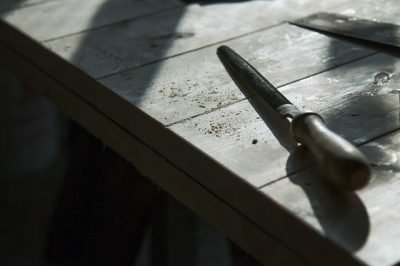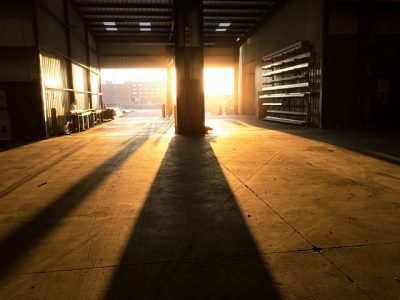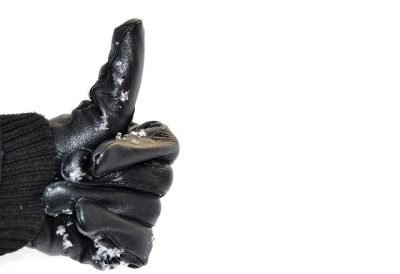Epoxy can be considered a bit of a blanket term for a bunch of different names you may have come across – epoxy resin, paint, coating, to name a few. Because of its versatility and innumerable applications, what this substance is and how it is used varies in the many industries it has become a mainstay in, for anything from laminating plywood to shipbuilding and naval engineering.
So what really is epoxy, and what makes it such a multipurpose substance? To begin understanding it, let’s break down the science behind the substance.
A couple of terms
Before launching into the chemistry of it, we’re going to explain a few terms and concepts that’ll pop up in our explanation, to simplify understanding and avoid making this into too much of an arduous classroom session.
For starters, let’s begin with the definition of epoxy. Bright Hub Engineering describes it as a “thermosetting polymer” – ‘thermosetting’ describes a substance that permanently sets or hardens once heated, while ‘polymer’ refers to a large molecule, made of a chain of monomers, a sequence of repeated and similar subunits. Polymerization, then, refers to a chemical reaction where several monomers come together to form complex, 3-dimensional polymer structures. Epoxies are also described as a ‘resin’ – viscous liquids which can be thermoset into permanent solids.
So what exactly is epoxy?
Epoxy is essentially a substance formed through the polymerization of monomers called epoxides. Typically, epoxies have two components – a resin and a hardener, which when combined undergo a chemical reaction which transforms from a thick liquid to a rigid solid, creating closely-linked cross-polymer structures. The two components need to be mixed in specific ratios, and as they begin to react they start to cure. The reaction generates heat, which thermosets the liquid to a tough, solid plastic, though additional heat can be applied to make the substance cure faster.
However, single component epoxies also exist – in such cases the substance is cured at high temperatures, instead of requiring a hardener, between 250-300°F, to create an extremely strong, durable and resilient solid, so much so that it is often used as an alternative to welding.
Because of these properties, epoxy is widely used in adhesives, protective coatings, priming and more. They’re strongly resistant to chemicals and temperature changes, are great insulators, have versatile mechanical strength and durability, and powerful adhesive strength, to name just a few properties. Epoxies can also be adapted to enhance certain properties, like increased temperature resistance, to be used in specialized environments, including underwater. Speaking of which –
Application and uses of epoxy
With its wealth of properties and impressive usage ranges, it’s not surprising that as well as being essential to several industrial applications, it’s also a handyman’s favorite at home. Here’s a breakdown of just a few ways epoxy can be used.
Furniture repair & carpentry
 Because of its powerful adhesive quality and durability, epoxy can be used to fill up gaps, the liquid pumped in through a handyman syringe into the joint of a loose-fitting table leg or stand, curing naturally until its hardened enough to turn rickety pieces of furniture around your home into sturdier, stronger and more durable items. This is a great solution for tackling wood rot, or to fill in gaps in metal or plastic structures – once cured, the structure will once more be robust and sturdy thanks to the rigid and extremely durable plastic holding everything together. Subsequently, you’ll find great use of epoxy adhesives in woodworking too, as an alternative or complement to wood glue.
Because of its powerful adhesive quality and durability, epoxy can be used to fill up gaps, the liquid pumped in through a handyman syringe into the joint of a loose-fitting table leg or stand, curing naturally until its hardened enough to turn rickety pieces of furniture around your home into sturdier, stronger and more durable items. This is a great solution for tackling wood rot, or to fill in gaps in metal or plastic structures – once cured, the structure will once more be robust and sturdy thanks to the rigid and extremely durable plastic holding everything together. Subsequently, you’ll find great use of epoxy adhesives in woodworking too, as an alternative or complement to wood glue.
Epoxy putty is also a great solution to fill out chipped areas on furniture – moldable and with the thermosetting properties making this a great adhesive, you can fit a section of the putty over the damaged or missing area of your chipped furniture, allow it to cure, chip off the excess and sand it over for good-as-new surfaces.
In fact, because of the tightly linked bonds and low porosity of epoxy once hardened, it’s great for coating surfaces which tend to be exposed to liquid often, like kitchen islands and bar countertops.
Floor paint & coating
 If done right, epoxy floor paint is a fantastic, wear- and tear-resistant, easy to clean and maintain option for garage floors. It’ll resist grease, stains, cracking, chemicals, and temperature and weather changes, as well as coping with your cars moving over it.
If done right, epoxy floor paint is a fantastic, wear- and tear-resistant, easy to clean and maintain option for garage floors. It’ll resist grease, stains, cracking, chemicals, and temperature and weather changes, as well as coping with your cars moving over it.
Floors can also be laid with epoxy as an adhesive tightly holding together quartz and aluminum oxide grains. The result is highly durable and wear-resistant.
Mechanical applications
Epoxy can be used for anything from reinforcing metal bolts to hold heavy machinery stationary, prevent corrosion and keep stress-induced cracks from emerging, to an alternative for welding. At home, epoxy glue may even be handy to attach pieces of metal together if you don’t have the experience and/or the equipment for soldering. Industrially, the thermosetting properties of epoxy and the ability to control how fast it can cure often make it a more favorable alternative to mechanical assembly – not only do you get powerful cohesion, the resultant solid is weather, temperature and chemical resistant, protects metal components from corrosion, and can resist stress and vibration to last longer.
Note though that epoxy should not be used on galvanized metal, as it may peel off. It is a good alternative for use on aluminum, though, which is not suitable for galvanization due to its tendency to bend.
Things to note
 If you’re attempting to use epoxy at home, especially for the first time, it is important to follow the manufacturer’s instructions to a T. Remember that you shouldn’t use epoxy adhesives and substances in a closed space – the vapors can be dangerous, and your work-area needs to be properly ventilated so you don’t end up steeping in the noxious fumes. Check and double-check the recommended ratios for resin and hardener if you’re using a two-component epoxy, and familiarize yourself with the curing process – some epoxies cure faster than others so you’ll have to be quick and sure-handed during application.
If you’re attempting to use epoxy at home, especially for the first time, it is important to follow the manufacturer’s instructions to a T. Remember that you shouldn’t use epoxy adhesives and substances in a closed space – the vapors can be dangerous, and your work-area needs to be properly ventilated so you don’t end up steeping in the noxious fumes. Check and double-check the recommended ratios for resin and hardener if you’re using a two-component epoxy, and familiarize yourself with the curing process – some epoxies cure faster than others so you’ll have to be quick and sure-handed during application.
It’s also important to acquire all the materials you’ll be needing, to hold and mix two-component epoxy, or to apply it. If you spill epoxy on yourself, clean it off with vinegar. Acetone can be used to clear up surfaces, but can be poisonous for use on skin since it can absorb into your system and lead to acetone poisoning. It’s always useful to wear protective gloves when working with epoxy, just in case.